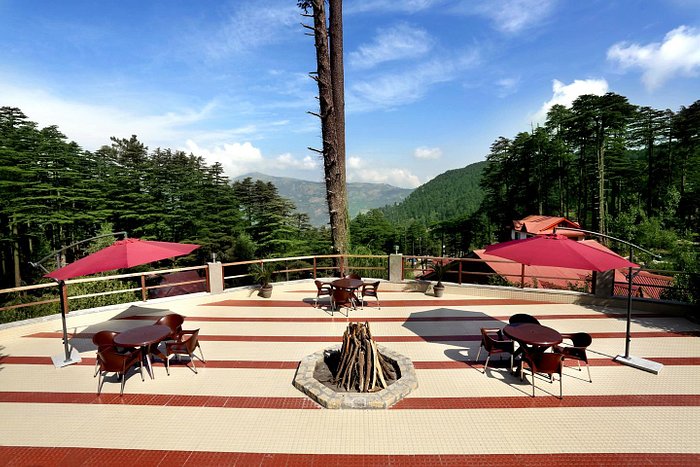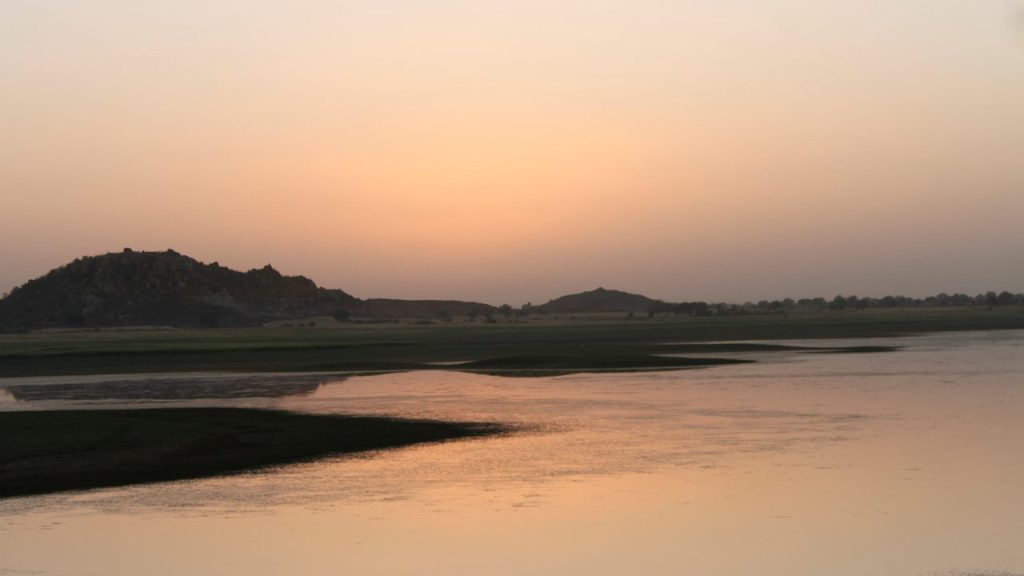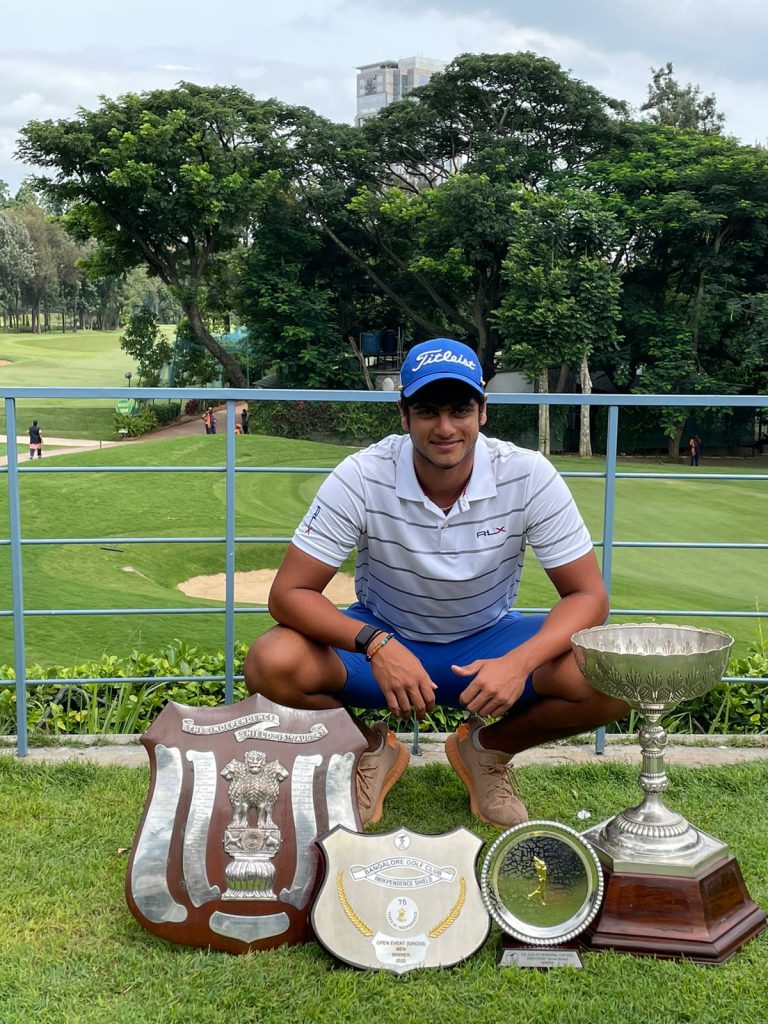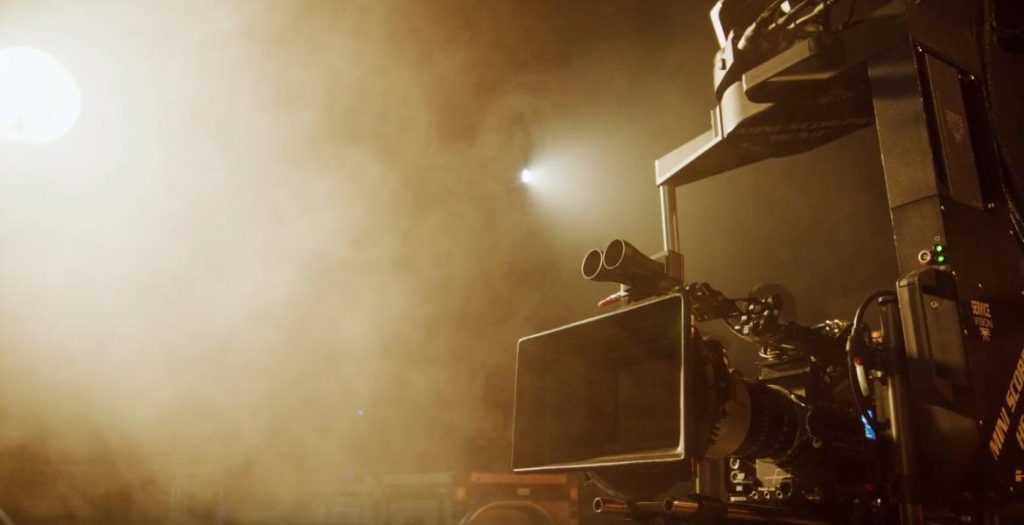Kavant Fair is a vibrant, cultural event held in Gujarat, India. It’s an annual celebration that showcases tribal traditions and heritage.
The Kavant Fair is a unique gathering where the Rathwa community comes together to celebrate their rich culture. This fair is not just an event; it’s a colorful display of dance, music, and traditional rituals. Held during the spring season, it symbolizes the unity and spirit of the Rathwa people.
Visitors can witness fascinating customs, intricate artwork, and traditional attire that reflect the deep-rooted history of the tribe. The fair provides an opportunity to experience the authentic tribal lifestyle, making it a must-see for anyone interested in India’s diverse cultural landscape. Prepare to be enchanted by the lively atmosphere and the warm hospitality of the Rathwa community at the Kavant Fair.
Introduction To Kavant Fair
The Kavant Fair is a vibrant festival celebrated in the Kavant region of Gujarat, India. This annual event draws crowds from across the country. It showcases the rich traditions and colorful customs of the local tribal communities.
Historical Significance
The Kavant Fair dates back centuries. It is deeply rooted in the history of the Rathwa tribe. Traditionally, it marks the onset of the harvest season. The fair has evolved over time, but its essence remains unchanged. The event preserves the tribe’s ancestral heritage. It serves as a reminder of their enduring cultural legacy.
Cultural Importance
Kavant Fair is more than just a festival. It is a celebration of tribal identity and unity. During the fair, people dress in traditional attire. They perform folk dances and songs. These performances are a window into the tribe’s customs and beliefs. Handicrafts and artworks are also displayed. They reflect the unique craftsmanship of the Rathwa tribe. The fair fosters a sense of community. It connects people with their roots.

Credit: designdestinations.org
Location And Timing
The Kavant Fair is a vibrant celebration of culture and tradition. Understanding its location and timing can enhance your experience. This guide will help you plan your visit.
Where It’s Held
Kavant Fair takes place in the village of Kavant. Kavant is in the Chhota Udepur district of Gujarat, India. The village is surrounded by lush greenery and scenic beauty. The location provides a perfect backdrop for the colorful festivities.
Best Time To Visit
The fair is held annually in March or April. It coincides with the festival of Holi, adding to its excitement. The weather is pleasant during this time. Days are warm, and nights are cool. This makes it ideal for outdoor celebrations.
Visitors should plan to arrive early in the morning. This allows you to enjoy the full day of activities. The fair is most lively in the afternoon and evening. Traditional music, dance, and food stalls keep the energy high.
Traditional Attire
The Kavant Fair is a vibrant cultural event in Gujarat, India. It showcases the rich heritage of the Rathwa community. Traditional attire plays a vital role in this celebration. People wear colorful and symbolic clothing. This attire reflects their culture and traditions.
Colorful Costumes
At the Kavant Fair, vibrant costumes catch everyone’s eye. Men and women dress in bright, eye-catching colors. Men often wear red turbans and white dhotis. Women’s attire includes colorful sarees with intricate patterns. Embroidery and beads add beauty to their outfits. These costumes create a festive atmosphere.
Colors have significant meanings in their clothing. Red signifies energy and passion. White represents purity and peace. These colors make the attire visually appealing. They also highlight the community’s cultural values.
Symbolism In Dress
Traditional attire at the Kavant Fair is more than just clothing. Each piece has deep symbolism. The designs and patterns tell stories of their ancestors. Geometric shapes and animal motifs are common. They represent nature and tribal life.
Jewelry also holds symbolic importance. Women wear silver ornaments, which signify prosperity. Men wear traditional bracelets and necklaces. These accessories complete their attire. They reflect pride in their cultural identity.
Face paint is another unique feature. People use natural colors to paint their faces. These designs signify different emotions and spiritual beliefs. The symbolic dress connects them to their roots. It reminds them of their heritage and traditions.
Music And Dance
When you think of the Kavant Fair, the vibrant beats of drums and the graceful movements of dancers come to mind. Music and dance are the heart of this celebration, drawing everyone into a world of rhythm and joy. The melodies and steps have been passed down through generations, making you feel connected to a long-standing tradition. Whether you’re a first-time visitor or a regular attendee, the musical performances and dance routines will captivate you.
Traditional Instruments
The music at Kavant Fair is like nothing you’ve heard before. Traditional instruments create a unique sound that adds to the fair’s lively atmosphere. You will see a variety of instruments, each with its own significance.
- Dhol: This double-headed drum is a staple at the fair. Its deep, resonant beats can make anyone start tapping their feet.
- Shehnai: A wind instrument that produces a soulful melody. It often marks the beginning of important rituals and performances.
- Manjira: Small hand cymbals that add a tinkling, rhythmic layer to the music. They are often used in conjunction with other instruments to keep the tempo.
The musicians are often local artists who have honed their skills over years of practice. Watching them play is not just entertaining; it’s a window into the culture and history of the region. Their dedication to preserving these traditional sounds is evident in every performance.
Popular Dance Forms
Dance at Kavant Fair is more than just movement; it’s a storytelling medium that conveys the rich cultural heritage of the region. The dances are energetic, colorful, and deeply symbolic.
- Garba: A dance form that involves circular movements and clapping. It’s usually performed in groups and is very inclusive, encouraging everyone to join in.
- Dandiya Raas: This dance involves the use of sticks (dandiyas) and is performed in pairs. The clicking of the sticks adds a rhythmic element that’s hard to resist.
- Bhavai: A folk dance that tells stories through elaborate hand movements and expressions. It is a visual treat and often leaves the audience spellbound.
Imagine joining a Garba circle, moving in sync with others, feeling the collective energy. Or perhaps picking up a pair of dandiyas and trying your hand at Dandiya Raas, the sticks clicking in harmony with the music. These experiences make the Kavant Fair unforgettable.
Ever wondered why music and dance are so integral to human culture? They bring people together, breaking down barriers and creating a shared sense of joy. So, next time you visit the Kavant Fair, don’t just watch—participate. Feel the music in your bones and let the dance carry you away.
Rituals And Ceremonies
Kavant Fair, held in Gujarat, India, is a vibrant celebration of tribal culture and rituals. Tribal communities gather to showcase traditional dances, music, and colorful attire.
Rituals and ceremonies are at the heart of the vibrant Kavant Fair, showcasing the deep-rooted traditions and cultural heritage of the local communities. This annual event is more than a fair; it’s a celebration of spirituality and identity. Let’s delve into the fascinating rituals and ceremonies that make Kavant Fair an unforgettable experience.Religious Practices
The religious practices at Kavant Fair are deeply spiritual and resonate with the faith of the local tribes. Every morning, the fair begins with a prayer ceremony. Villagers gather around the sacred fire, offering grains and flowers to invoke blessings from their deities. The chanting of ancient hymns fills the air, creating an atmosphere of reverence. You can feel the devotion as participants bow in unison, their faces reflecting a serene commitment to their beliefs. Have you ever watched a community come together in prayer? It’s a humbling experience that reminds you of the collective power of faith.Cultural Rituals
Cultural rituals at Kavant Fair are a sight to behold. Each tribe brings its unique traditions, showcasing their rich cultural tapestry. One of the most engaging rituals is the traditional dance performance. Dressed in vibrant costumes, dancers move to the rhythmic beats of drums, narrating stories of valor and love. During my visit, I witnessed an elder teaching children the dance steps, ensuring the tradition lives on. This passing of the baton is a poignant reminder of the importance of preserving cultural heritage. Rituals also include the crafting of intricate beadwork and textiles. Artisans sit patiently, weaving stories into their creations. Watching them work, you realize the dedication and skill involved in keeping these traditions alive. What cultural rituals do you hold dear in your community? Observing these practices at Kavant Fair might inspire you to reconnect with your roots. Attending Kavant Fair provides a unique opportunity to witness these rituals and ceremonies firsthand. It’s not just about observing; it’s about participating and feeling a part of something larger than yourself. The fair invites you to step into a world where every ritual has a meaning, and every ceremony tells a story. So, when you plan your visit, immerse yourself in the religious practices and cultural rituals. You’ll leave with a deeper understanding and appreciation of the diverse traditions that define the Kavant Fair.Local Cuisine
The Kavant Fair is a vibrant celebration of culture and tradition. One of its most enticing aspects is the local cuisine. The fair is a food lover’s dream. It offers a variety of delicious dishes that reflect the region’s rich culinary heritage. Visitors can enjoy an array of traditional foods that are both flavorful and unique.
Popular Dishes
At the Kavant Fair, the popular dishes draw many visitors. One must-try dish is ‘Dhokla’. It is a savory steamed cake made from fermented rice and chickpea batter. Another favorite is ‘Fafda’. These are crispy fried gram flour snacks often served with spicy chutney.
For those with a sweet tooth, ‘Jalebi’ is a must. These are deep-fried spirals soaked in sugar syrup. ‘Kachori’ is another crowd-pleaser. These are spicy, stuffed pastries that burst with flavor. The variety of dishes ensures there’s something for everyone to enjoy.
Food Stalls At The Fair
The food stalls at the Kavant Fair are a sight to behold. Each stall offers a unique culinary experience. Vendors proudly display their dishes, tempting passersby with the aroma of freshly cooked food. The stalls are colorful and vibrant, adding to the fair’s festive atmosphere.
Many stalls specialize in regional delicacies. Some offer ‘Khichu’, a spicy rice flour dough. Others serve ‘Undhiyu’, a mixed vegetable dish cooked in an earthen pot. The food stalls provide an opportunity to taste authentic local flavors. Each bite is a journey through the region’s culinary traditions.
Art And Craft
Kavant Fair showcases vibrant art and craft traditions. Local artisans display intricate beadwork, textiles, and pottery. The fair celebrates cultural heritage through creative expressions.
Kavant Fair is a vibrant celebration of culture, community, and creativity. One of the most captivating aspects of the fair is its dedication to art and craft. This section will explore the intricate world of handmade goods and live craft demonstrations that make Kavant Fair a must-visit event. ###Handmade Goods
At Kavant Fair, you’ll discover a treasure trove of handmade goods. Each item tells a story, reflecting the skill and passion of its creator. From intricately woven textiles to beautifully carved wooden figurines, the fair offers a wide array of unique pieces. Imagine walking through aisles filled with colorful fabrics, each one hand-dyed using traditional techniques. You can feel the texture, admire the patterns, and even talk to the artisans about their craft. This direct interaction adds a personal touch that mass-produced items simply lack. Many vendors at the fair also sell handmade jewelry, featuring local stones and innovative designs. These pieces are not just accessories; they are expressions of the artist’s vision and creativity. Owning such a piece means carrying a part of that artistry with you. ###Craft Demonstrations
Craft demonstrations at Kavant Fair are a spectacle to behold. These live sessions offer you a glimpse into the meticulous process behind each creation. Watching an artisan at work is both educational and inspiring. I remember watching a potter skillfully shape clay on a wheel. His hands moved with such precision and grace, transforming a lump of clay into a beautiful vase. It was fascinating to see the process unfold right before my eyes. You could almost feel the connection between the artisan and his craft. These demonstrations are not just for show. They offer practical insights that you can apply in your own creative endeavors. For instance, you might learn new techniques in weaving or discover the secrets behind traditional dyeing methods. Have you ever wondered how a simple block of wood can turn into an intricate sculpture? At Kavant Fair, you can find the answer. Skilled woodworkers demonstrate carving techniques, revealing the patience and skill required to transform raw materials into art. By attending these demonstrations, you gain a deeper appreciation for the time and effort that goes into handmade goods. It’s a reminder that true craftsmanship is an art form that deserves to be celebrated. — Visiting Kavant Fair is more than just a shopping experience. It’s an opportunity to immerse yourself in the world of art and craft, connect with talented artisans, and perhaps even find inspiration for your own creative projects. So, why not plan your visit? Discover the magic of handmade goods and witness the artistry of craft demonstrations at Kavant Fair.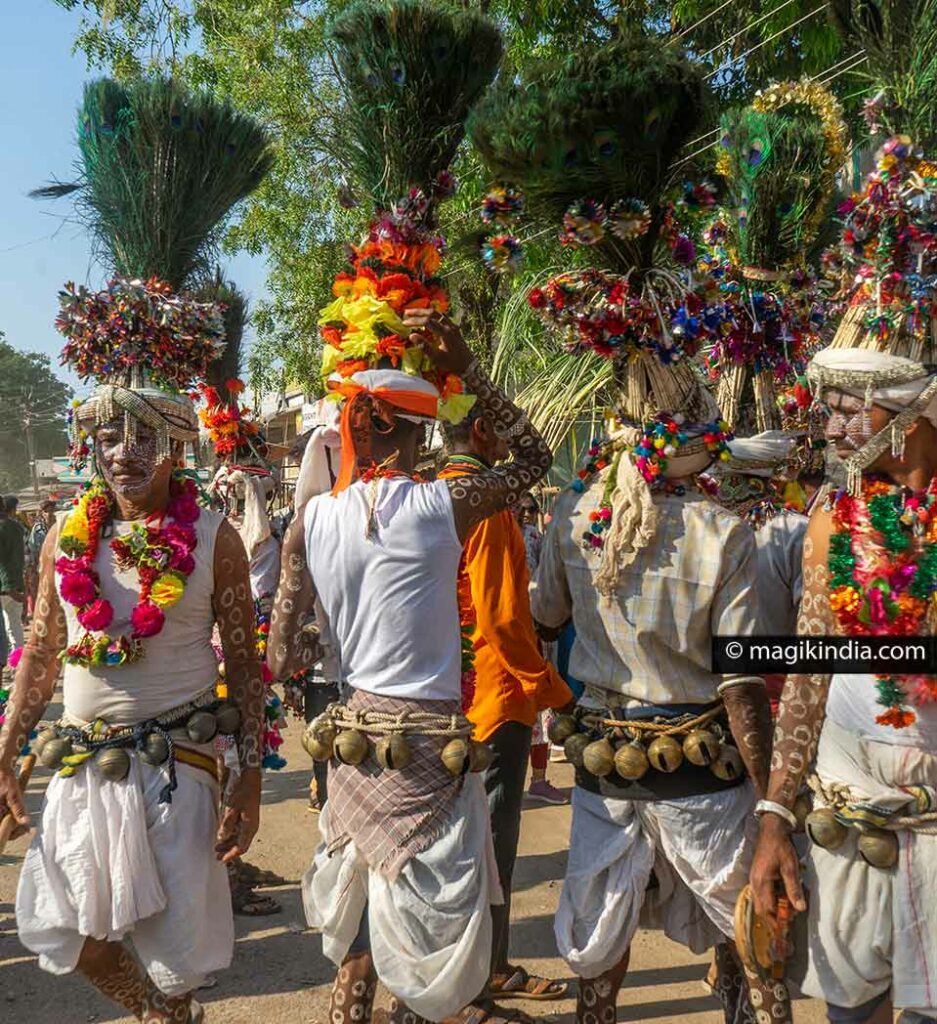
Credit: magikindia.com
Impact On Community
The Kavant Fair has a significant impact on the local community. It brings people together, boosts the local economy, and strengthens social ties. This event is a highlight of the year for many residents.
Economic Benefits
The Kavant Fair attracts thousands of visitors each year. These visitors spend money on food, crafts, and local services. This spending supports local businesses and creates job opportunities.
Stalls at the fair often sell handmade goods. This gives local artisans a platform to showcase their work. Increased sales during the fair help sustain these small businesses throughout the year.
Local hotels and restaurants see a spike in reservations. This increase in tourism supports the hospitality industry. It also helps in the development of new services and facilities.
Social Impact
The Kavant Fair fosters a sense of community. Residents gather to celebrate their culture and traditions. This strengthens bonds and creates a shared sense of pride.
The fair is a great place for socializing. People meet old friends and make new ones. This helps build a more connected community.
Local artists and performers get a chance to shine. Their talents are showcased to a large audience. This encourages more people to participate in the arts.
Youth involvement in the fair is high. They learn about their heritage and gain valuable skills. This ensures that traditions are passed on to future generations.
Visitor Experience
The Kavant Fair is a vibrant cultural festival held in the heart of India. Visitors can immerse themselves in the rich traditions and lively atmosphere. The event offers a unique blend of music, dance, and crafts. Each year, thousands of people gather to celebrate and experience this colorful spectacle. The visitor experience at Kavant Fair is truly one-of-a-kind.
Travel Tips
Plan your trip in advance to avoid last-minute hassles. Book your accommodations early. The fair attracts many tourists, so rooms fill up quickly. Pack light but keep essentials handy. Comfortable shoes are a must. You will walk a lot. Carry a reusable water bottle. Stay hydrated throughout the day. Learn a few basic Hindi phrases. This will help in communication with locals.
What To Expect
Expect a sea of colors and sounds at Kavant Fair. Traditional music fills the air, and dancers in vibrant costumes perform. Artisans display their handmade crafts. You can buy unique souvenirs. Local food stalls offer delicious delicacies. Taste a variety of regional dishes. The fairground is bustling with activities. From puppet shows to folk dramas, there is something for everyone.
Safety is a priority. Follow the guidelines provided by organizers. Keep your belongings secure. Be mindful of your surroundings. Enjoy the cultural immersion. Capture memories, but also live in the moment. The Kavant Fair promises an unforgettable experience. You will leave with a heart full of joy and a camera full of vibrant memories.

Credit: commons.wikimedia.org
Preservation Efforts
The Kavant Fair is a vibrant celebration of culture and tradition. It holds significant historical importance in the lives of the Rathwa tribe. Preservation efforts are crucial to ensuring that this unique festival continues to thrive for generations to come. Let’s delve into how these efforts are shaping the future of the Kavant Fair.
Protecting Traditions
Preserving the traditions of the Kavant Fair requires dedicated efforts. One approach that has proven effective is the documentation of cultural practices. By creating records of the dances, music, and rituals, we safeguard these elements from being lost over time. This documentation allows future generations to understand and appreciate their heritage.
Additionally, educational programs play a key role. Schools and community centers host workshops where elders share stories and teach traditional skills. This hands-on learning helps young people connect with their culture in a meaningful way.
Another vital aspect is the involvement of the community. When everyone participates, the preservation becomes a collective effort. You can contribute by attending the fair, engaging with the performers, and showing interest in their traditions. Your participation encourages the community to continue these practices.
Future Of Kavant Fair
What does the future hold for the Kavant Fair? One promising trend is the integration of modern technology. Social media and online platforms provide a space to showcase the festival to a broader audience. This exposure can attract more visitors and generate support for preservation initiatives.
Moreover, sustainable tourism practices are being adopted. By focusing on eco-friendly approaches, the fair can minimize its environmental impact. This ensures that the natural beauty of Kavant remains intact for future celebrations.
Funding is another critical factor. Government grants and private sponsorships can provide the necessary financial support for preserving the fair. Have you ever thought about how you could contribute? Even small donations can make a significant difference.
In essence, the future of the Kavant Fair is bright, but it relies on continued efforts to protect and promote its rich traditions. Your involvement and support can help ensure that this cherished festival continues to thrive.
Frequently Asked Questions
What Is Kavant Fair?
Kavant Fair is a vibrant tribal festival in Gujarat, India. It celebrates cultural heritage, traditional dances, and rituals.
When Is Kavant Fair Held?
Kavant Fair is held annually after Holi, typically in March or April. The exact dates vary each year.
Where Does Kavant Fair Take Place?
Kavant Fair takes place in the village of Kavant, located in Chhota Udepur district of Gujarat, India.
What Can Visitors Expect At Kavant Fair?
Visitors can expect colorful traditional dances, music, tribal rituals, and stalls with local crafts. It’s a lively celebration.
Conclusion
The Kavant Fair offers a unique glimpse into rich traditions. Visitors can enjoy vibrant dances, colorful attire, and local crafts. The fair’s lively atmosphere brings joy to everyone attending. This cultural event strengthens community bonds and preserves heritage. A visit to the Kavant Fair promises unforgettable memories.
So, plan a trip to experience this cultural gem. Your journey to Kavant will be full of delightful surprises. Don’t miss this chance to immerse yourself in local traditions. Enjoy the beauty and spirit of the Kavant Fair.
{ “@context”: “https://schema.org”, “@type”: “FAQPage”, “mainEntity”: [ { “@type”: “Question”, “name”: “What is Kavant Fair?”, “acceptedAnswer”: { “@type”: “Answer”, “text”: “Kavant Fair is a vibrant tribal festival in Gujarat, India. It celebrates cultural heritage, traditional dances, and rituals.” } } , { “@type”: “Question”, “name”: “When is Kavant Fair held?”, “acceptedAnswer”: { “@type”: “Answer”, “text”: “Kavant Fair is held annually after Holi, typically in March or April. The exact dates vary each year.” } } , { “@type”: “Question”, “name”: “Where does Kavant Fair take place?”, “acceptedAnswer”: { “@type”: “Answer”, “text”: “Kavant Fair takes place in the village of Kavant, located in Chhota Udepur district of Gujarat, India.” } } , { “@type”: “Question”, “name”: “What can visitors expect at Kavant Fair?”, “acceptedAnswer”: { “@type”: “Answer”, “text”: “Visitors can expect colorful traditional dances, music, tribal rituals, and stalls with local crafts. It’s a lively celebration.” } } ] }
